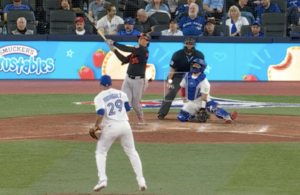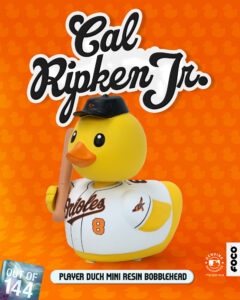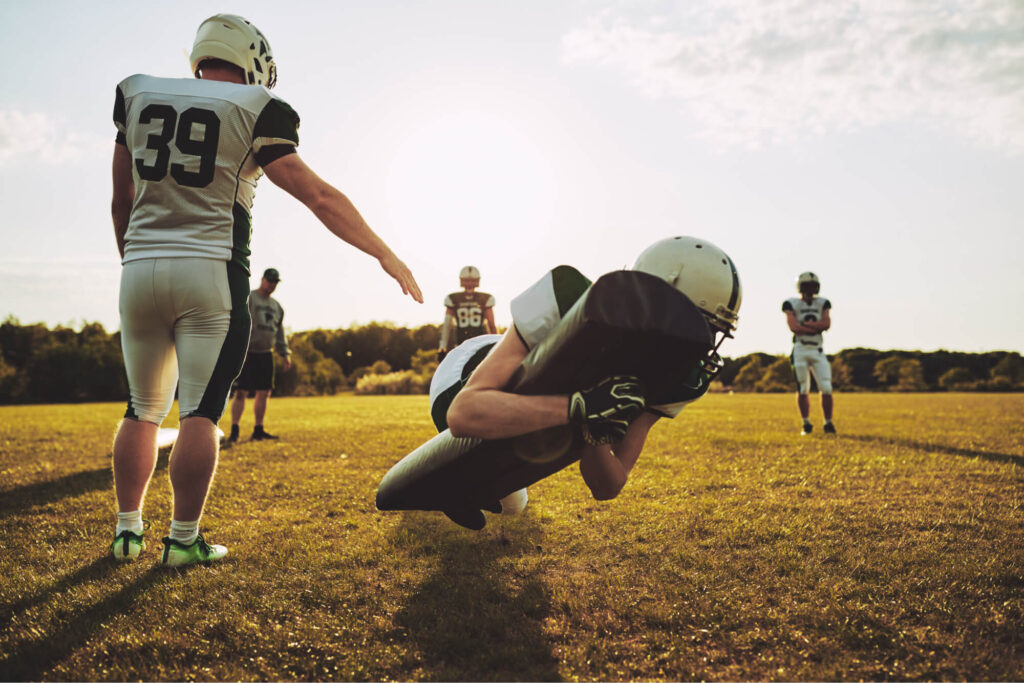In baseball, describing anything as “the worst” isn’t an easy moniker. In some cases it’s easy to define “the worst,” like the 1988 Orioles and 1961 Philadelphia Phillies, who each hold the modern record for consecutive losses in a season in their respective leagues, with 21 and 23, respectively.
But with trades, it is harder because there are many variables that go into play to determine what might have happened for certain players had they stayed with one team versus another.
But the monstrosity known as the 1990 Glenn Davis-to-the-Orioles trade has stood the test of time. It has been named by ESPN’s Page 2, and many other media outlets, as the worst trade in baseball history – not just Orioles history – and that dates back to the beginning of the decade.
The history is of course that Davis, a slugging first-baseman for the Houston Astros who played on their 1986 NLCS runner-up team, was brought to the Orioles by General Manager Roland Hemond to provide some power for a team that had been deficient in that area. He was traded for OF Steve Finley, and pitchers Curt Schilling and Pete Harnisch.
Finley won a World Series with Arizona, was a two-time All Star and won five Gold Glove Awards. Schilling became a certifiable star, winning three World Series titles (including the 2004 title while with Boston) and was a six-time All-Star. Harnisch’s career was a bit of a Ping-Ponger but he was also an All-Star (in 1991) and had a respectable career.
In 2002, Baltimore’s City Paper named Davis the “worst” first baseman in Orioles history as part of its “Zeroes” feature on the worst Orioles ever. The publication cited the fact the fact that then-Arizona’s World Series win made Davis’ trade especially glaring.
That was in 2002. In 2013, as Schilling is on the way to potential Hall of Fame consideration, it looks even worse.
Davis, expected to hit 40 HR during his time in Baltimore, hit 13 in his best Orioles season in 1992. He missed much of the 1993 season after his jaw was broken during a bar fight, and then missed another month after being hit in the head by a foul ball while sitting in the dugout.
Days after an argument with manager Johnny Oates about not being in the starting lineup upon his return in September, Davis was sent packing, never to play in the Majors again.
Interestingly, Hemond, the author of the disastrous trade, had just before (in 1989) won MLB Executive of the Year honors (as he had also done twice before). On paper, the trade would be bringing a proven slugger to the Orioles. But, as the Orioles since have learned at the expense of the Seattle Mariners (in their own disastrous trade that brought Adam Jones to the Orioles) sometimes it is best to stay young and play the waiting game.
To add insult to injury, Davis’ contract at the time was an Orioles record. So the team overpaid, lost three future All-Stars, and three more years and Hemond’s resignation from the team before Pat Gillick took over and righted the ship in 1996.
Davis is now a City Councilman in Columbus, GA, where he lives. Schilling is out of baseball but serves as a commentator on baseball networks; Harnisch is an instructor with the Los Angeles Angels organization. Finley last played baseball in 2007 but played until past the age of 41.
Hemond is retired, as is Gillick, who later led the Philadelphia Phillies to the 2008 World Series title.










14 Responses
And they also let Mickey Tettleton go when they got Davis. Granted, not a part of the trade, but a related roster move that still hurts.
If memory serves, I believe the got Chris Hoiles from Detroit in return for Tettleton. I wouldn;t call that one a bad move.
They actually acquired a pitcher, Jeff M. Robinson, for Tettleton. His stats with Detroit in 1990 were 10-9 with a 5.90 ERA, I think. One of those wins was a particularly impressive one against the Orioles, and I guess they liked what they saw. I’m not sure if he made it to the all-star break, but he was 4-9 with the O’s in 1991 when he was sent packing to Rochester and then out of the organization.
It’s unbelievable I remember Glenn Davis getting booed mercilessly after the first year and he would give people the finger what’s up with that
I disagree. He was the kind of hitter that could carry a entire line up! They needed a power hitter and beat out both leagues to get him. Then he had that freak injury. That one thing ruined his career and Balt. was stuck with the contract and did everything humanly possible to rehab this guy. SMH, that was the knife that finished our great team for many years to come.
Selling the brightest prospects and dismantling the farm system was their all time worse mistake. Remember a time when they could pull out a no name and he was a star in days? That’s what kept us at the top of the Big East.
You are a moron
Davis suffered a nerve injury in his neck during his first spring training with the Orioles.[8] He was batting .244 with four home runs and eight RBIs through April 24, 1991 when this injury landed him on the disabled list, and kept him from the Orioles’ line-up through the middle of August. Upon his return, he never regained his power hitting form, and ended the season with ten home runs, 28 RBIs and a .227 average in 49 games. In 1992, Davis had a decent but unspectacular season for the Orioles, with a .276 batting average, thirteen home runs, and 48 RBI’s in 106 games.
The 1993 season was a disaster for Davis. Splitting time fairly evenly between first base and designated hitter, Davis was batting just .177 with one home run and nine RBIs through May when his jaw was broken in a bar fight.[9] After a brief stint with the Triple-A Rochester Redwings, Davis’s return to action was delayed when, while he was sitting in the dugout during an Orioles game on August 1, he was hit in the head by a line drive foul ball of the bat of teammate Jeffrey Hammonds.[10] He was finally reactivated on September 6, but, following an argument with Orioles manager Johnny Oates about being left out of the starting line-up against left-handed pitcher Dave Fleming, was released by the club without playing another game.[11]
Actually Hammond like professional wrestling and show Davis a Coco Butt, with his big head that’s what actually happened
Was a terrible trade but you forgot to mention the fact that Glenn Davis had a serious nerve issue in his neck which led to the demise of his career after the Orioles acquired him.
To be fair, you should have mentioned that no one knew what to do with Schilling at the time and the ‘Stros swapped him a year later for the immortal Jason Grimsley, whose best achievement was to conceal a corked bat in a clubhouse duct and went on to have a star turn with the O’s, too.
As much of a gamble as it was to let those three young players go and bet on Davis, Hemond was also betting on a starting rotation with little prior success. Jeff Ballard was coming off a 2-11 season, but they were counting on a reprise of his 18-8 1989 (he went 6-12). Jose Mesa had a respectable 3-2 record as a late season callup in 1990 and had a great spring, but was always showering by the fourth inning (he went 6-11). Jeff M. Robinson’s ERA with Detroit in 1990 was almost 6 runs a game (he went 4-9). Dave Johnson was the O’s biggest winner in 1990, going 13-9, but got torched (4-8 with an ERA over 7) and never pitched for the O’s again. They thought Ben McDonald (8-5, 2.43 in 1990) was up and coming, but that never materialized (he finished 6-8). Their best starter turned out to be Bob Milacki (10-9), who didn’t even make the team out of spring training. No one power hitter could have overcome the state of the Orioles’ pitching that year, a house of cards dependent upon pitchers who hadn’t had more than one good year in their careers.
Great points about O’s pitching, Mike. Davis did have a nerve injury, but it felt like there was a black cloud over the guy no matter where he went, what he did. But then again, many athletes have injuries and overcome them.
The Orioles had a lot of problems, but had Ballard and some of the other pitchers come through it could have been different in ’90. Keith “Check Swing” Moreland being a disaster as a trade addition in ’89 contributed to the team collapsing down the stretch when it mattered and not making the playoffs despite a great run, so I think Hemond tilted to fixing the hitting rather than shoring up the pitching at the time.
(Moreland, by the way is now doing commentary on WGN for Cubs broadcasts. I’m sure any Orioles fans ever watching the broadcasts must laugh hysterically any time Moreland comments on a batter making a check swing.)
The Orioles were trying to make up for trading Eddie Murray in 1988. When you look back at this trade almost 30 years later you have to ask yourself have the O’s ever fully recovered from that trade. Cal Ripken remained an Oriole for the remainder of his career but it wasn’t the same “Oriole Way” of the 60’s, 70’s and 80’s. When Eddie retired he was one of only 3 players with 3,000 hits and 500 home runs (Willie Mays & Hank Aaron). That’s some elite baseball company.
I bumped into Glenn Davis on the parking lot of Memorial Stadium (I lived nearby and walked my dog there often). I believe it was 1990 or 91. Off day, apparently he had just come out of the stadium, and we chatted for a good 5-10 minutes while he threw a frisbee for my dog Zack. Regardless of the stories about his fiery temper, he seemed like a super nice guy. Seemed genuinely interested in my career (touring classical musician), and was in no hurry. Just a leisurely chat. I guess it helped that I didn’t ask for an autograph or ask any questions about his (troubled) time with the team. He seemed to welcome the distraction.